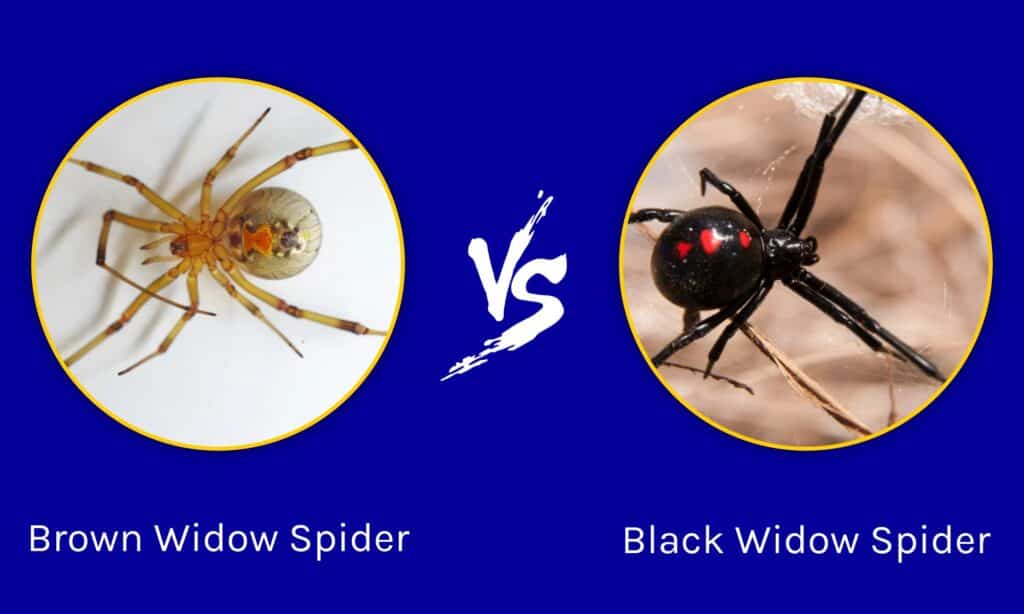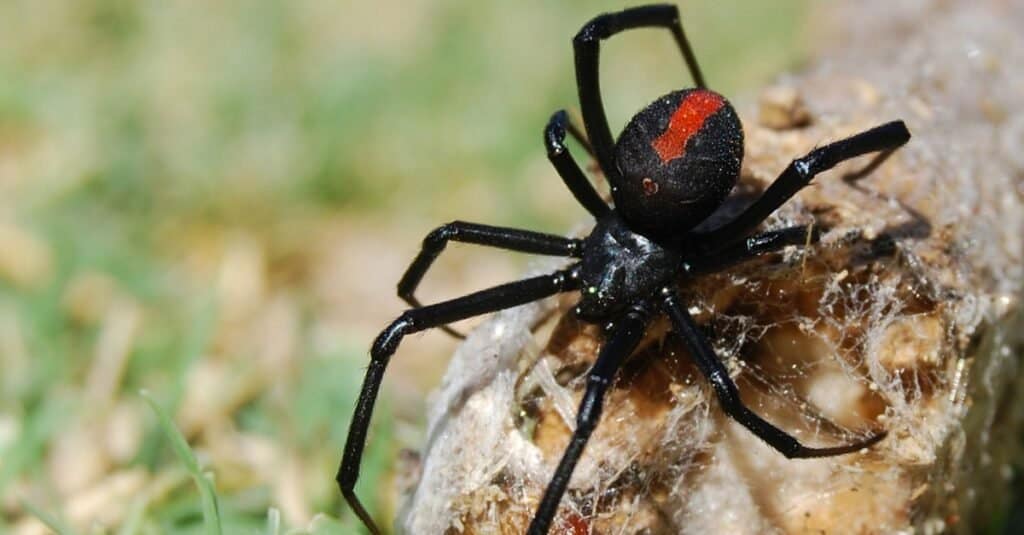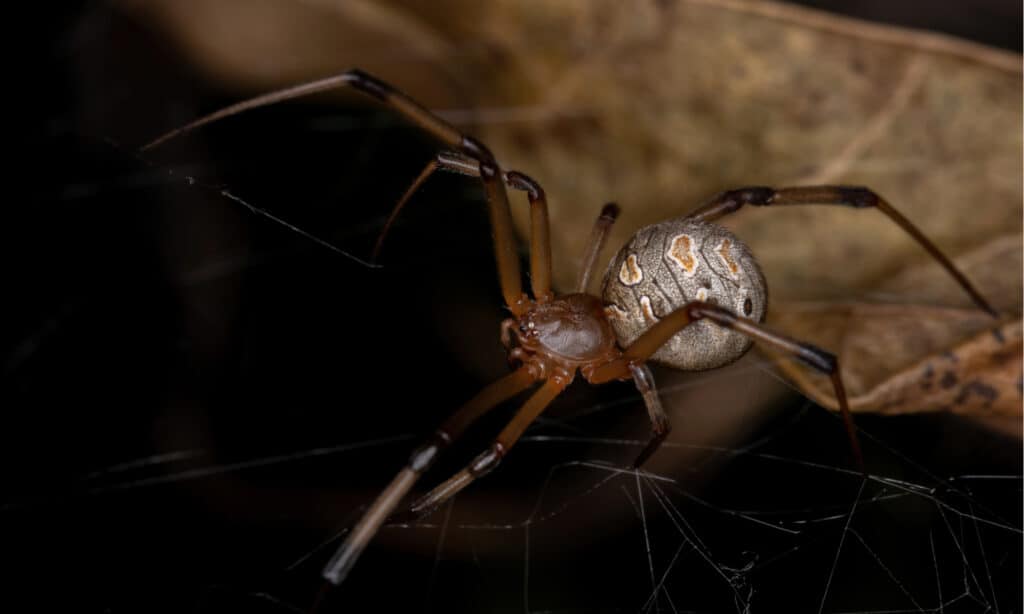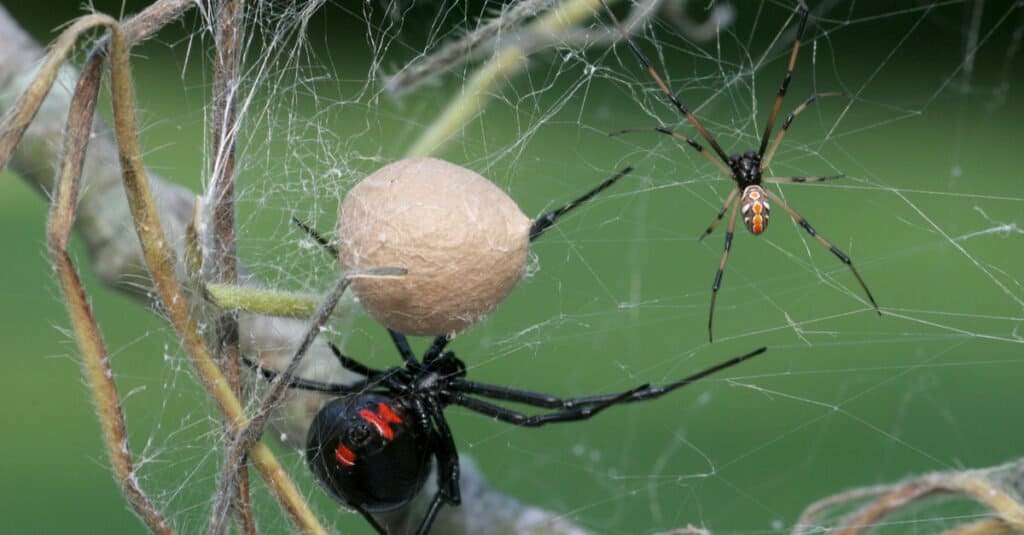Did you know that there are different types of widow spiders: the brown widow spider vs black widow spider? What separates these two arachnids from one another, and how can you learn to tell them apart? Plus, do you even live in a region of the world that deals with both of these spiders on a regular basis?
In this article, we will address all of your burning questions regarding brown and black widow spiders. By the end of this, you will know how to tell these two spiders apart, as well as where they are typically found and their typical behaviors.
Let’s get started and learn all about widow spiders now!
Comparing Brown Widow vs Black Widow Spider

| Brown Widow Spider | Black Widow Spider | |
|---|---|---|
| Size | Half an inch to one inch long body | 1 ½ or 2 inches long |
| Appearance | Found in shades of brown with stripes along sides and top of abdomen; sometimes has red or orange markings but not always | Shiny black in color with a red or orange dot on top of its abdomen; females have trademark red hourglass underneath their abdomen |
| Location and Habitat | Southeastern United States and California, along with other tropical locations. Prefers dark locations near human populations, such as under patio furniture | Worldwide. Found in warmer climates and in well-lit areas. Prefer dryness and hides beneath clutter or outdoor materials so long as they aren’t often disturbed |
| Behavior | Shy and only bites when accidentally forced against human or animal skin; prefers to run away or retreat | Reclusive and highly aggressive if guarding eggs or surprised; will bite more readily than brown widows |
| Venom Level | Mildly venomous | Extremely venomous |
Key Differences Between Brown Widow vs Black Widow Spider

Brown widow spiders are found in fewer locations than the prolific black widow spider.
©Jay Ondreicka/Shutterstock.com
There are many key differences between brown widow spiders and black widow spiders. While both of these spiders belong to the same family, black widow spiders grow larger than the average brown widow spider. Brown widow spiders are found in fewer locations than the prolific black widow spider. The venom levels of these spiders differ, with the black widow being more dangerous than the brown widow spider overall.
Let’s talk about these differences in more detail now.
Brown Widow vs Black Widow Spider: Size

The venom levels of these spiders differ, with the black widow being more dangerous than the brown widow spider overall.
©Decha Thapanya/Shutterstock.com
You may not notice the size differences between brown widow spiders and black widow spiders right off the bat, but there is a slight difference in their overall body lengths. For example, black widows grow slightly larger than brown widows on average, though you are unlikely to notice this unless you are looking at them side-by-side.
Brown widow spiders grow anywhere from a half inch to a full inch, while black widows average anywhere from one and a half inches to 2 inches in length. However, this is such a slight difference that you are unlikely to notice it, and either way, it produces a spider of medium to large size. The larger the spider, the less likely you are to mess with it!
Brown Widow vs Black Widow Spider: Location and Habitat

Black widows enjoy dry and well-lit areas, while brown widow spiders seek out darkness more often than not.
©iStock.com/maria72
Both brown widow spiders and black widow spiders can be found in the same locations, but the black widow spider is more prolific than the brown widow spider overall. For example, you can find black widow spiders around the world, but brown widow spiders are found in tropical and subtropical regions, as well as a few outlying states in the United States.
In fact, brown widow spiders are found in more locations now than they have ever been in before, even as far west as California. The black widow is different from the brown widow in this way, as it has been found in every place on earth besides Antarctica.
Brown widow spiders are often found in populated areas, often hiding beneath outdoor furniture or playsets, and the same could be said for black widows as well. However, black widows tend to choose natural hiding spots such as wood piles, or clutter found in undisturbed locations, such as attics or basements. They enjoy dry and well-lit areas, while brown widow spiders seek out darkness more often than not.
Brown Widow vs Black Widow Spider: Appearance

If you hadn’t already guessed, the brown widow spider is covered in various shades of brown, while the black widow spider is a shiny jet-black color.
©Vinicius R. Souza/Shutterstock.com
You can easily tell a brown widow spider from a black widow spider based on their appearance. If you hadn’t already guessed, the brown widow spider is covered in various shades of brown, while the black widow spider is a shiny jet-black color. The brown widow spider can have stripes of brown on its sides, along with stripes of red, while the black widow maintains a black coloring overall.
However, black widow spiders have trademark red or orange dots on the top half of their abdomen, while female black widow spiders have a red hourglass underneath their abdomen, which is something that brown widow spiders do not share. If they have an hourglass, it is orange in color.
Brown Widow vs Black Widow Spider: Behavior
While both of these spiders are happier when left alone, there are some key behavioral differences between brown widow spiders and black widow spiders. For example, brown widow spiders are not aggressive toward humans or animals, while black widow spiders exhibit aggression when protecting their eggs. Brown widow spiders only bite when forced against human skin, while black widow spiders chase or otherwise pursue those they view as threats.

While brown widow spiders are not aggressive toward humans or animals, black widow spiders exhibit aggression when protecting their eggs.
©Mark_Kostich/Shutterstock.com
Brown Widow vs Black Widow Spider: Venom Level
A final difference between brown widow spiders and black widow spiders is their venom level. Black widow spiders are more venomous than brown widow spiders overall, and they are even more venomous than rattlesnakes. This is why it is extremely important to seek medical attention if you are bitten by a black widow spider. Brown widow spiders are also venomous, but far less likely to harm humans or animals.
How Can You Tell a False Widow Spider?
The noble false widow spider (Steatoda nobilis) is typically larger than both S. bipunctata and S. grossa. It is known for having an abdomen pattern that is often described as ‘skull-shaped,’ though it resembles more of a pentagon shape.
This pattern is more distinct in males and may be less prominent or even absent in females. Their legs are consistently colored in shades of red to brown. Further, this spider features a noticeable bulbous, brownish abdomen, often adorned with distinct cream markings and reddish-orange legs.
Female specimens can reach sizes of up to 15mm, or even 32mm when including their legs.
The photo featured at the top of this post is © James Gathany / public domain – License / Original
Thank you for reading! Have some feedback for us? Contact the AZ Animals editorial team.






